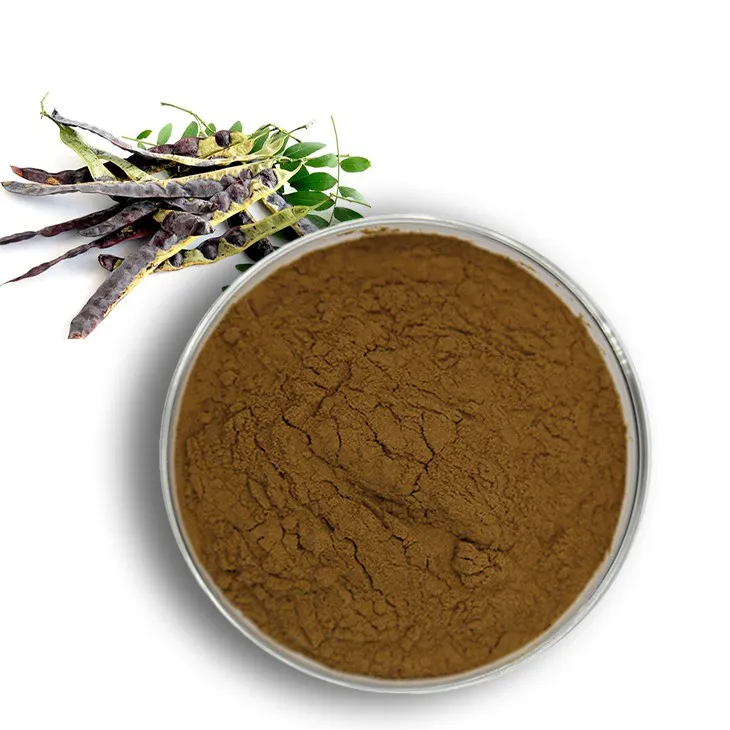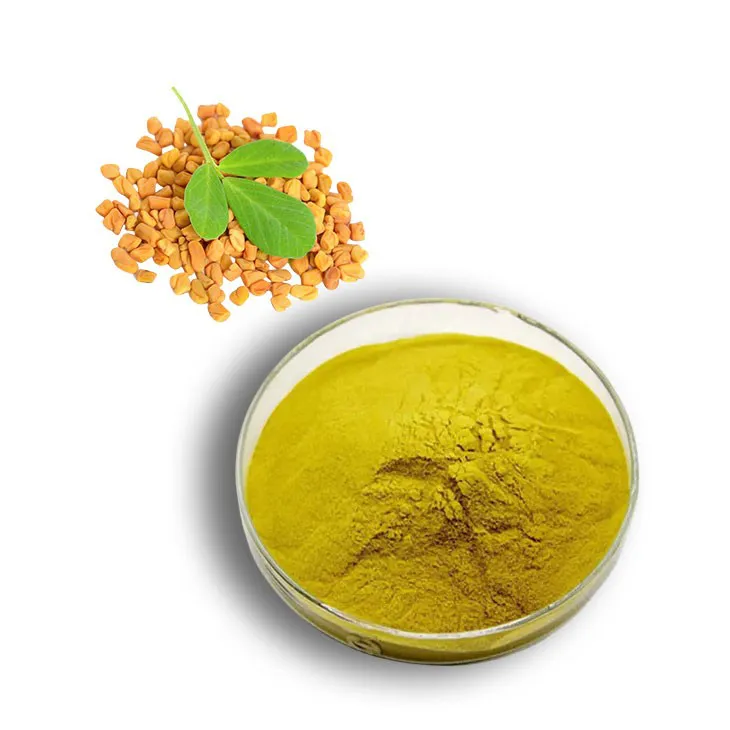- 0086-571-85302990
- sales@greenskybio.com
From Lab to Tablet: The Production Process of Vitamin B9 Powder
2024-07-04
1. Introduction
Vitamin B9, also known as folic acid, is an essential nutrient for human health. It plays a crucial role in various biological processes, such as DNA synthesis, cell division, and the prevention of neural tube defects during pregnancy. The production of vitamin B9 powder, which can be further processed into tablets, involves a series of complex steps starting from the laboratory and ending with a final, consumable product. This article will explore in detail the different stages of this production process.
2. Raw Material Sourcing
The production of vitamin B9 powder begins with the sourcing of raw materials. Folic acid can be synthesized chemically or obtained from natural sources, although the majority of commercial production is through chemical synthesis.
2.1 Chemical Synthesis Precursors
The main precursors for the chemical synthesis of vitamin B9 include p - aminobenzoic acid (PABA) and glutamic acid. These raw materials need to be of high purity to ensure the quality of the final product.
- PABA is typically sourced from chemical manufacturers. It is produced through a series of chemical reactions starting from basic petrochemical raw materials. The quality control at the source of PABA is crucial as any impurities can affect the subsequent synthesis steps.
- Glutamic acid can be obtained either through microbial fermentation or chemical synthesis. Microbial fermentation is a more "natural" approach, but chemical synthesis allows for greater control over the purity and quantity of the product. In both cases, strict quality standards are applied during the production process.
2.2 Natural Sources Consideration
Although less common in large - scale commercial production, natural sources of vitamin B9 are also considered. These include leafy green vegetables, fruits, and legumes. However, extracting vitamin B9 from these natural sources is a complex and often inefficient process.
- Leafy greens such as spinach and kale contain folates, the natural form of vitamin B9. But the extraction process requires dealing with a large amount of plant material to obtain a relatively small amount of the vitamin. Additionally, the folates from natural sources are less stable compared to the synthetic form of vitamin B9.
- Fruits like oranges and lemons also contain some amount of folates. But again, the extraction and purification process from fruits is not economically viable on a large scale compared to chemical synthesis.
3. Laboratory - Based Purification and Synthesis
Once the raw materials are sourced, the next step is the purification and synthesis in the laboratory. This stage is crucial in ensuring the production of high - quality vitamin B9 powder.
3.1 Purification of Raw Materials
Before the actual synthesis, the raw materials need to be purified to remove any impurities that may interfere with the reaction or affect the quality of the final product.
- For PABA, purification methods may include crystallization, chromatography, and distillation. Crystallization is often used to obtain pure PABA crystals. The impure PABA solution is cooled slowly under controlled conditions, allowing the PABA to form crystals which can be separated from the remaining solution. Chromatography techniques, such as high - performance liquid chromatography (HPLC), can be used to further purify the PABA by separating it from other closely related compounds.
- Glutamic acid purification may involve similar techniques. For example, ion - exchange chromatography can be used to remove any unwanted ions present in the glutamic acid sample. This helps in obtaining a pure form of glutamic acid which is then ready for the synthesis of vitamin B9.
3.2 Synthesis of Vitamin B9
The synthesis of vitamin B9 involves a series of chemical reactions using the purified raw materials. The most common method is the condensation reaction between PABA and glutamic acid.
- First, PABA is activated by a suitable reagent. This activation step makes the PABA more reactive towards the subsequent reaction with glutamic acid.
- Then, the activated PABA reacts with glutamic acid in the presence of a catalyst. The catalyst helps in speeding up the reaction and ensuring a higher yield of the product. The reaction conditions, such as temperature, pH, and reaction time, need to be carefully controlled to optimize the synthesis process.
- After the reaction is complete, the product is usually a crude form of vitamin B9. This crude product contains not only the desired vitamin B9 but also some by - products and unreacted starting materials.
4. Conversion and Processing
After the synthesis in the laboratory, the crude vitamin B9 needs to be further processed to convert it into a more suitable form for tablet production.
4.1 Purification of Crude Vitamin B9
The crude vitamin B9 is purified to remove the by - products and unreacted starting materials. This purification process is similar to the purification of raw materials.
- Chromatography techniques, especially HPLC, are often used to separate the vitamin B9 from other impurities. By carefully selecting the appropriate stationary and mobile phases in HPLC, a high - purity vitamin B9 can be obtained.
- Recrystallization can also be used as a purification method. The crude vitamin B9 is dissolved in a suitable solvent at a high temperature, and then the solution is cooled slowly. The vitamin B9 crystals will form, leaving the impurities in the solution.
4.2 Conversion to Powder Form
Once the vitamin B9 is purified, it needs to be converted into a powder form. This is usually achieved through drying processes.
- Spray drying is a common method. The purified vitamin B9 solution is sprayed into a hot air chamber. The hot air rapidly evaporates the solvent, leaving behind fine vitamin B9 powder. This method is efficient and can produce a powder with a relatively uniform particle size.
- Freeze - drying, also known as lyophilization, can also be used. In this process, the vitamin B9 solution is frozen first, and then the frozen water is removed under vacuum. This method is more suitable for heat - sensitive vitamin B9 samples as it minimizes the exposure to high temperatures during the drying process.
5. Tablet Production
The vitamin B9 powder is then used for tablet production. This involves several steps to ensure the production of high - quality tablets.
5.1 Blending with Excipients
Before tableting, the vitamin B9 powder is blended with excipients. Excipients are substances added to the formulation to improve the tablet's properties.
- Fillers such as lactose, microcrystalline cellulose are often added. These fillers help in increasing the bulk of the tablet and ensuring that the tablet has a proper size and shape. They also provide a matrix for the vitamin B9 powder to be evenly distributed within the tablet.
- Binders like starch or polyvinylpyrrolidone (PVP) are added to hold the powder particles together. The binder forms a cohesive mass when wet, which helps in maintaining the integrity of the tablet during and after compression.
5.2 Compression
The blended powder is then compressed into tablets using a tablet press. The compression process needs to be carefully controlled to ensure the tablets have the correct hardness, thickness, and weight.
- The powder is first filled into the die of the tablet press. The amount of powder filled determines the weight of the tablet.
- Then, the upper and lower punches of the tablet press are brought together with a certain pressure. The pressure is adjusted based on the desired hardness of the tablet. If the pressure is too high, the tablet may be too hard and difficult to disintegrate in the body; if the pressure is too low, the tablet may be too soft and crumble easily.
- After compression, the tablets are ejected from the die.
5.3 Coating (Optional)
Some vitamin B9 tablets may be coated for various reasons.
- Enteric coating can be applied to protect the vitamin B9 from the acidic environment of the stomach. This is especially important for vitamins that are more stable and better absorbed in the intestines. The enteric coating material is designed to remain intact in the stomach but dissolve in the intestines.
- Film coating can be used for aesthetic purposes or to improve the swallowability of the tablets. The film - coated tablets have a smooth and shiny appearance, which is more appealing to consumers.
6. Quality Control
Throughout the production process, from raw material sourcing to tablet production, quality control is of utmost importance to ensure the safety and efficacy of the vitamin B9 tablets.
6.1 Raw Material Quality Control
Raw materials are tested for their purity, identity, and potency before being used in the production process.
- For PABA and glutamic acid, spectroscopic techniques such as infrared spectroscopy (IR) and nuclear magnetic resonance (NMR) can be used to confirm their identity. These techniques analyze the molecular structure of the compounds and can detect any impurities or deviations from the expected structure.
- The purity of the raw materials is determined by methods such as HPLC. The HPLC analysis can quantify the amount of the desired compound and any impurities present in the sample.
6.2 In - process Quality Control
During the production process, quality control checks are carried out at various stages.
- During the synthesis of vitamin B9, the reaction progress is monitored. This can be done by sampling the reaction mixture at different time intervals and analyzing it using techniques such as HPLC. By monitoring the reaction progress, any deviations from the expected reaction can be detected early and corrective actions can be taken.
- After the purification of the crude vitamin B9, the purity of the product is again checked using HPLC or other appropriate methods. This ensures that the purification process has been effective and the product meets the required purity standards.
6.3 Final Product Quality Control
The final vitamin B9 tablets are subjected to a comprehensive quality control check.
- The tablets are tested for their physical properties such as hardness, thickness, and weight. These properties need to be within the specified limits to ensure the tablets are of consistent quality. The hardness of the tablets can be measured using a hardness tester, and the thickness and weight can be measured using appropriate measuring instruments.
- The content of vitamin B9 in the tablets is determined using analytical methods such as HPLC. The measured amount of vitamin B9 should be within the labeled amount, typically with a certain tolerance range.
- Disintegration and dissolution tests are also carried out. The tablets should disintegrate and dissolve within a specified time period to ensure proper absorption in the body. These tests simulate the conditions in the gastrointestinal tract and are important for evaluating the bioavailability of the vitamin B9 in the tablets.
7. Conclusion
The production process of vitamin B9 powder from the laboratory to the tablet form is a complex and multi - step process. It involves careful raw material sourcing, purification, synthesis, conversion, and tablet production, with strict quality control at each stage. Understanding this production process is essential for ensuring the production of high - quality vitamin B9 tablets that can effectively contribute to human health.
FAQ:
What are the main raw materials for Vitamin B9 powder production?
Typically, the main raw materials for Vitamin B9 powder production may include certain chemical compounds or natural substances rich in folic acid precursors. For example, some synthetic chemical substances can be used as the starting point for production. Additionally, in some cases, natural extracts from plants that contain folate can also be part of the raw material sourcing, although synthetic methods are more commonly used in large - scale production to ensure consistency and purity.
What purification techniques are commonly used in the lab during Vitamin B9 powder production?
Common purification techniques in the lab for Vitamin B9 powder production may include chromatography methods. For instance, high - performance liquid chromatography (HPLC) can be used to separate and purify Vitamin B9 from other substances. Crystallization is another technique often employed. By carefully controlling the temperature, solvent, and concentration, the Vitamin B9 can be made to form pure crystals, which helps in removing impurities. Distillation might also be used in some cases, especially if there are volatile impurities present.
How is the conversion from the initial raw materials to Vitamin B9 powder carried out?
The conversion from the initial raw materials to Vitamin B9 powder involves a series of chemical reactions. These reactions are carefully designed and controlled in the laboratory. First, there may be reactions to transform the precursor substances into intermediate compounds with more folic acid - like structures. Then, through further reactions such as hydrolysis, oxidation - reduction reactions, and condensation reactions, the final Vitamin B9 molecule is formed. After that, the purification steps mentioned earlier are carried out to obtain the pure Vitamin B9 powder.
What quality control measures are in place during the production of Vitamin B9 powder?
During the production of Vitamin B9 powder, various quality control measures are implemented. Firstly, raw material inspection is carried out to ensure the quality and purity of the starting materials. During the production process, in - process testing is done at different stages to monitor the progress of reactions and purification. Analytical techniques like spectroscopy are used to determine the chemical composition and purity of the intermediate and final products. Final product testing includes assays to verify the potency of the Vitamin B9 powder and checks for any residual impurities to ensure it meets the required quality standards.
How is Vitamin B9 powder transformed into tablet form?
To transform Vitamin B9 powder into tablet form, several steps are involved. First, appropriate excipients are added to the Vitamin B9 powder. These excipients can include binders, which help hold the powder particles together, fillers to adjust the tablet size, and lubricants to prevent sticking during the tablet - making process. Then, the mixture is compressed using tablet - pressing machines under specific pressure conditions to form tablets of the desired shape, size, and hardness.
Related literature
- Production and Purification of Vitamin B9: Current Trends and Future Perspectives"
- "From Raw Materials to Vitamin B9 Tablets: A Comprehensive Review of the Manufacturing Process"
- "The Chemistry and Production of Vitamin B9: Advances and Challenges"
- ▶ Hesperidin
- ▶ Citrus Bioflavonoids
- ▶ Plant Extract
- ▶ lycopene
- ▶ Diosmin
- ▶ Grape seed extract
- ▶ Sea buckthorn Juice Powder
- ▶ Fruit Juice Powder
- ▶ Hops Extract
- ▶ Artichoke Extract
- ▶ Mushroom extract
- ▶ Astaxanthin
- ▶ Green Tea Extract
- ▶ Curcumin
- ▶ Horse Chestnut Extract
- ▶ Other Product
- ▶ Boswellia Serrata Extract
- ▶ Resveratrol
- ▶ Marigold Extract
- ▶ Grape Leaf Extract
- ▶ New Product
- ▶ Aminolevulinic acid
- ▶ Cranberry Extract
- ▶ Red Yeast Rice
- ▶ Red Wine Extract
-
Citrus Aurantii Extract
2024-07-04
-
Andrographis Paniculata Extract Powder
2024-07-04
-
Hesperidin
2024-07-04
-
Saponin Extract
2024-07-04
-
Fenugreek Extract Powder
2024-07-04
-
White Peony Extract
2024-07-04
-
Shikonin
2024-07-04
-
Black Rice Extract
2024-07-04
-
Hawthorn powder
2024-07-04
-
Bamboo Leaf extract
2024-07-04





















